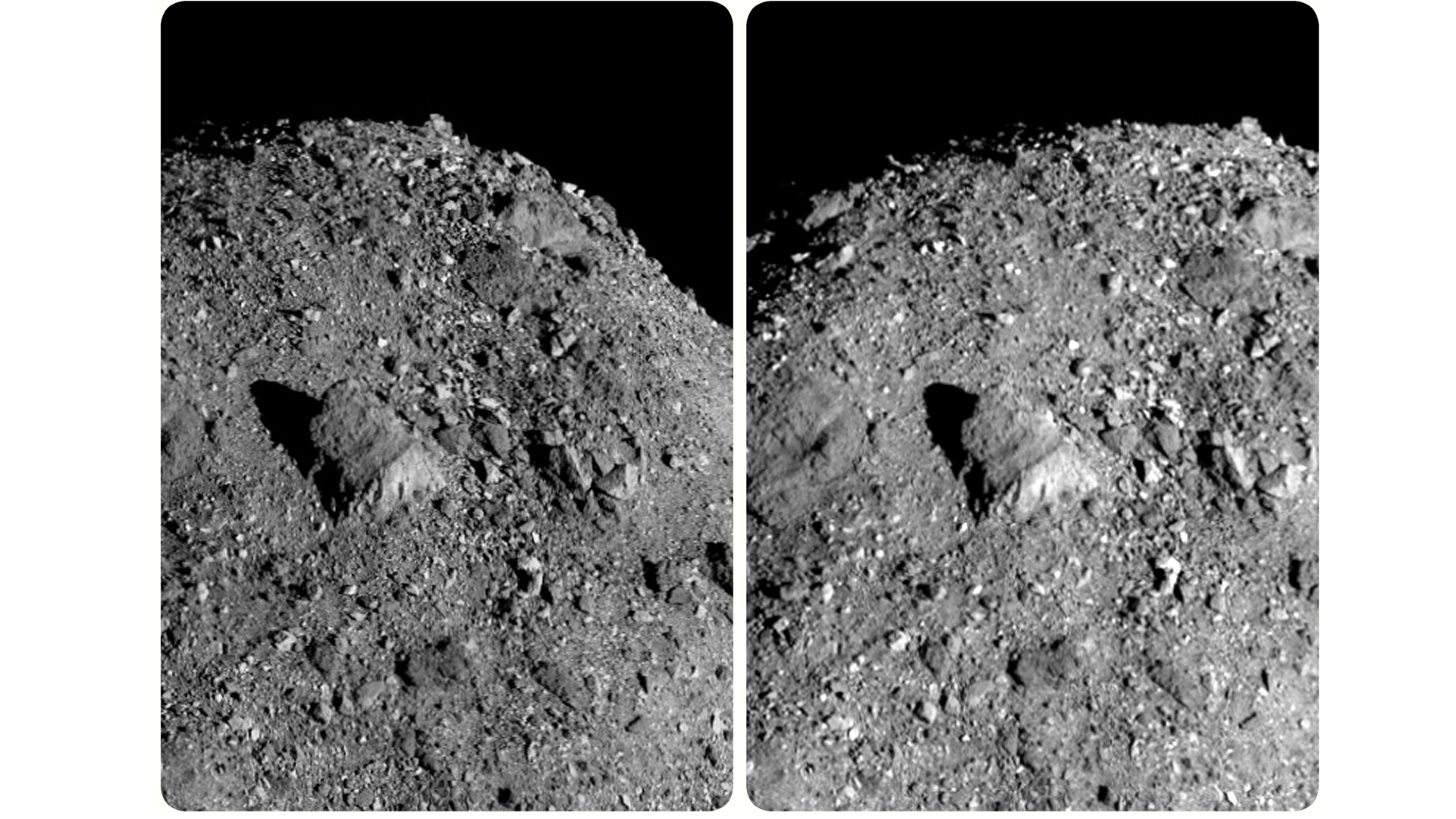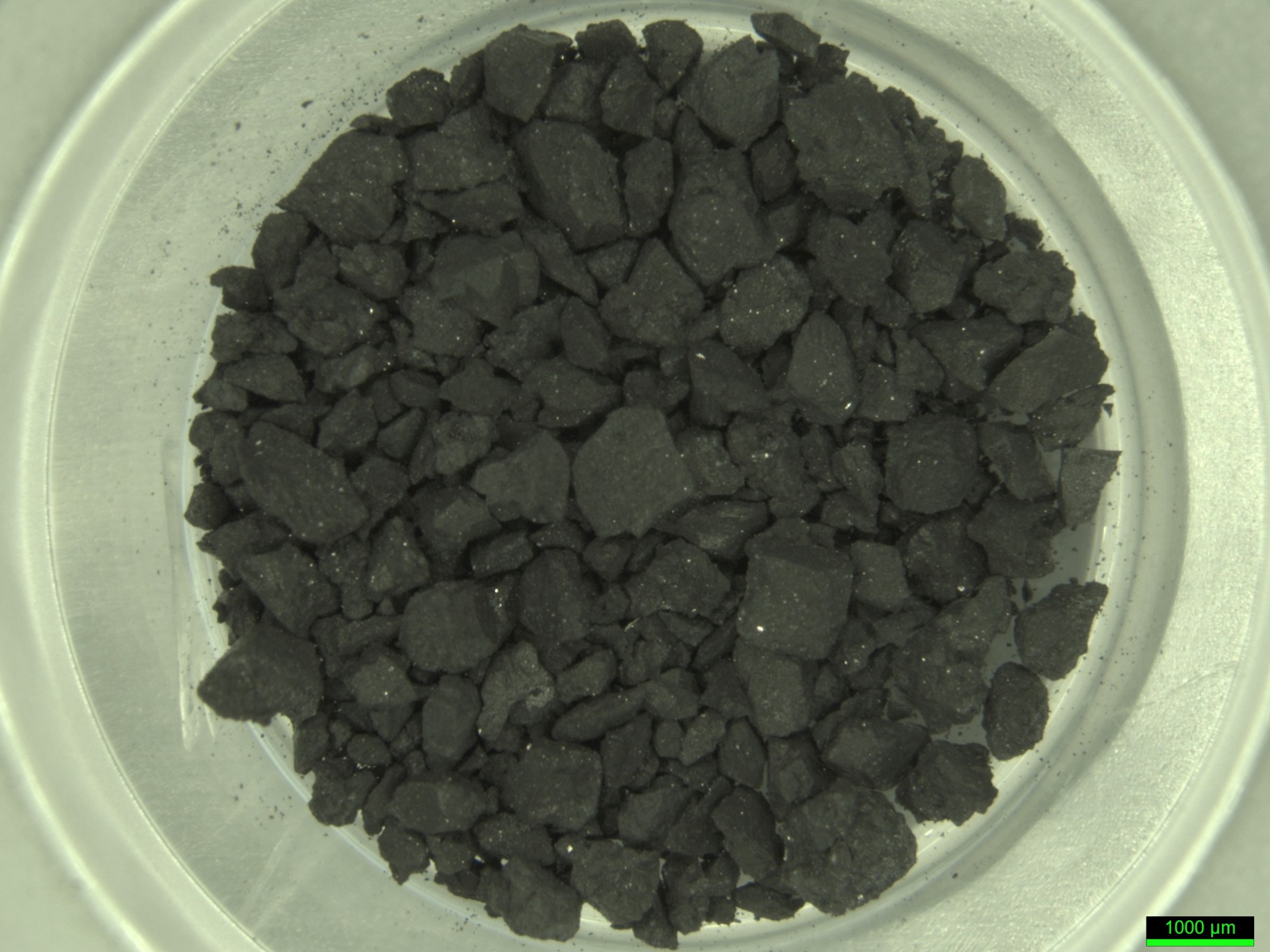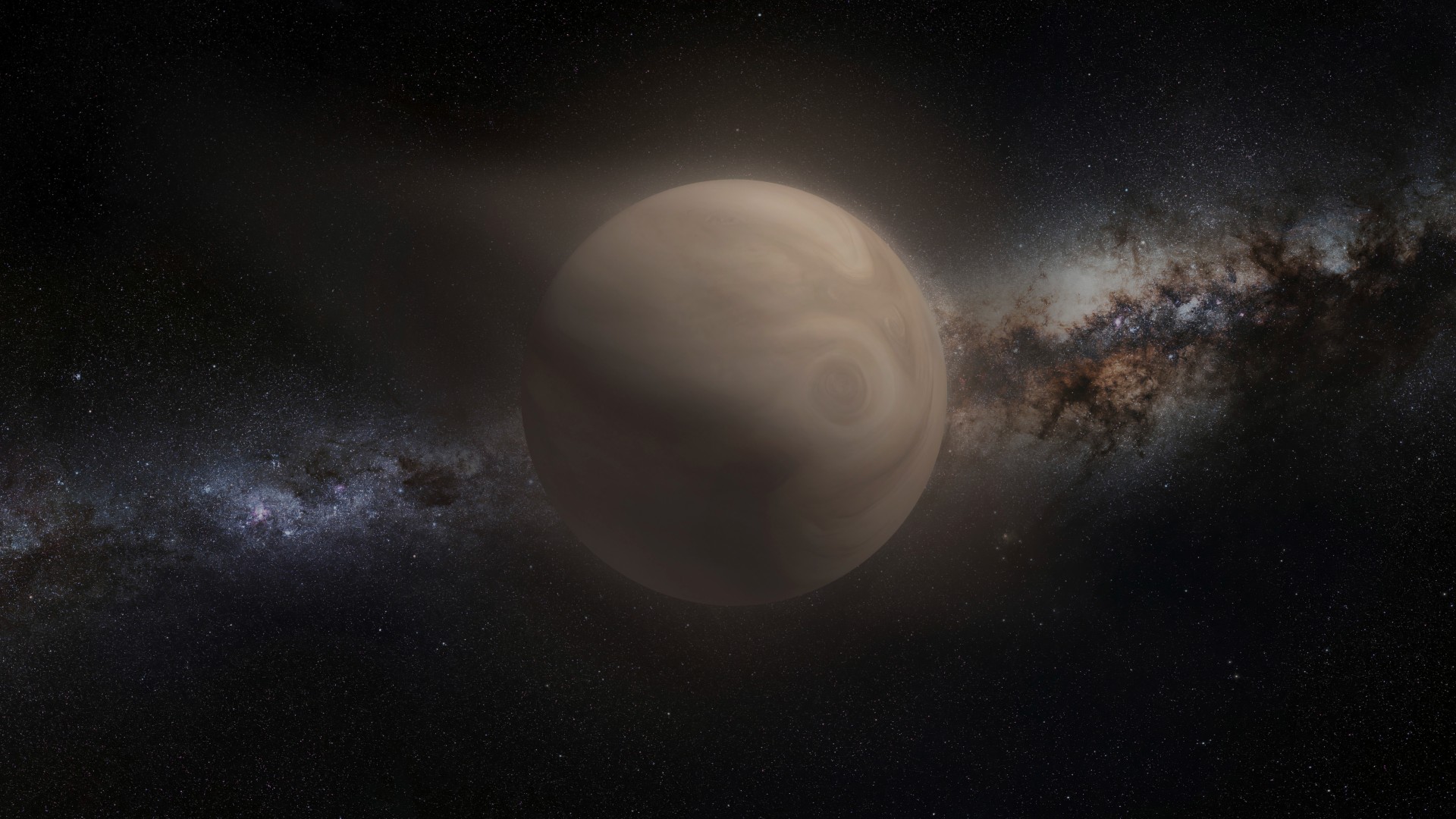NASA's OSIRIS-REx spacecraft changed how we think about asteroids. Here's how.
Looking at OSIRIS-REx's target asteroid Bennu through telescopes, astronomers thought that it would be rather similar to other known space rocks. They were in for a surprise.
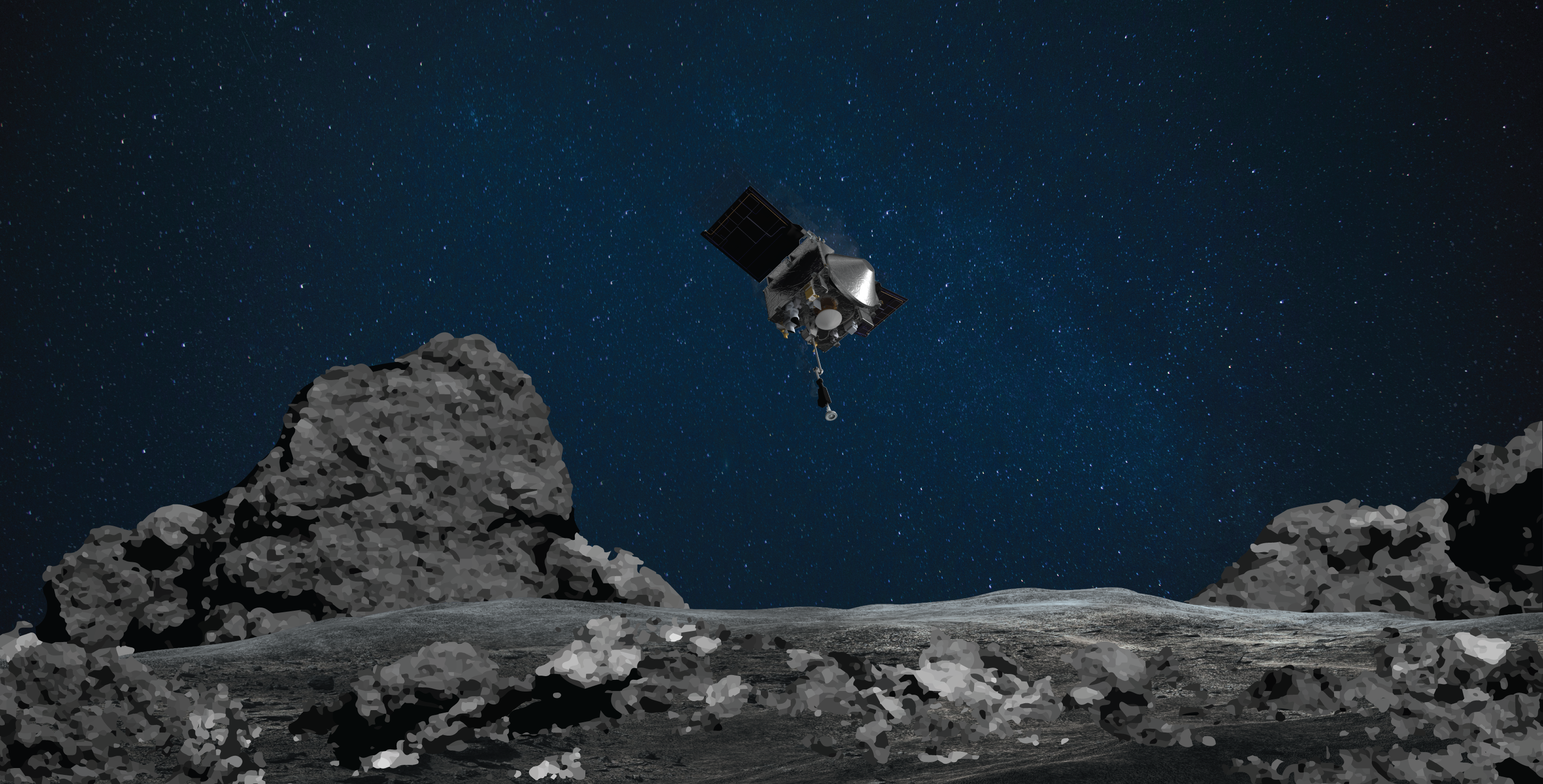
OSIRIS-REx was the third mission in history to collect a sample from an asteroid and featured the most comprehensive suite of instruments ever flown on an asteroid research mission. The spacecraft's two years of scanning the surface of asteroid Bennu and its brief sample-collection touchdown showed scientists how little they know about space rocks.
Prior to OSIRIS-REx's 2016 launch, two other missions studied asteroids in detail: Japan's Hayabusa 1 that delivered sand and dust grains from asteroid Itokawa to Earth in 2010; and NASA's NEAR-Shoemaker, which explored asteroid Eros in the late 1990s and landed on its surface in 2001. A handful of earlier missions had made brief flybys of several asteroids before that.
But it was Hayabusa 1 that for the first time confirmed what space rock researchers had long theorized: That many asteroids are not solid blocks of rock but conglomerations of boulders, sand and gravel that have arisen from collisions between larger bodies throughout the history of the solar system. These conglomerations, held together only by the feeble forces of the rock's gravitational forces, became known as rubble piles.
"When the Japanese Hayabusa 1 mission visited asteroid Itokawa, it looked exactly like what everyone's intuition said a rubble pile should look like," Kevin Walsh, a planetary scientist at Southwest Research Institute and lead scientist of the Regolith Development Working Group of the OSIRIS-REx mission, told Space.com. "It was literally just a pile of rocks in space."
Related: The greatest asteroid missions of all time!
Rubble piles are not alike
Looking at OSIRIS-REx's target asteroid Bennu through telescopes, astronomers thought that the rock would be rather similar to Itokawa. They were in for a surprise.
Prior to OSIRIS-REx's arrival at Bennu, scientists knew that the 1,614-foot-wide (492 meters) rock has a different chemical composition than Itokawa. While Itokawa is mostly made of quartz-like silica-rich material, Bennu is rich in carbon. But Bennu is a rare carbon-rich kind of asteroid, the so-called B-type that is believed to contain chemical compounds from the early epochs of the solar system.
Breaking space news, the latest updates on rocket launches, skywatching events and more!
But other than that, the way the surface reflected light indicated that just like Itokawa, Bennu would be made of conglomerations of boulders interspersed with wide ponds filled with sand, on which the spacecraft could comfortably land.
But when OSIRIS-REx took its first close look at Bennu, it saw a "hellscape" of rocks rising against the feeble gravity of the tiny Bennu into unexpected heights, according to Walsh
Odd rocks
These rocks were oddly porous, which, the researchers realized, confused their telescope measurements and convinced them that Bennu will be sandy just like Itokawa. The material these rocks were made of was somewhat similar to clays that can be found on Earth, but the asteroid's weak gravity allowed the rocks to create unexpected formations.
"The physical structure of that material is totally unlike what we have on Earth," Edward Beau Bierhaus, an OSIRIS-REx research scientist at Lockheed Martin, which built the spacecraft for NASA, told Space.com. "We see boulders on the surface of Bennu that are fairly large, tens of meters in size. If such boulders were to exist on Earth, the material would have to have a fairly significant amount of strength to support its weight, but that doesn't appear to be the case on Bennu. These boulders actually appear extremely porous and very weak."
Thanks to their odd structure, these boulders behave in unexpected ways. A study led by Bierhous and published in 2022 suggested that the sponge-like nature of these rocks protects the lumpy asteroid from the effects of impacts of other bodies. These porous rocks, scattered all over Bennu's surface, seem to be absorbing energy of smaller impacting bodies, acting like a crumple zone in a car and protecting the surface of the asteroid. As a result, scientists see far fewer smaller craters on the asteroid's surface than they would statistically expect.
"You can have an impact or strike a boulder and that porous boulder might potentially totally disrupt," said Bierhaus. "But in doing so, it absorbs the energy of that impact so that it doesn't transmit into the rest of the body."
Like a swamp
OSIRIS-REx is the third spacecraft in history to snatch a sample from an asteroid after Japan's missions Hayabusa 1 and Hayabusa 2 (Hayabusa 2 landed on asteroid Ryugu in 2019). OSIRIS-REx's approach to the sample collection, however, was radically different from the Hayabusa missions. Thanks to that the OSIRIS-REx team gained a whole new level of understanding of what asteroids are all about.
"The Hayabusa touchdowns were much softer," said Walsh. "We brought the entire force of the spacecraft down and really pushed hard into the surface to get the entire sampler head flat on the surface. Then we blew gas into the surface that helped to get our sample into our collection mechanism."
The asteroid's response to the touchdown was unexpected. First, the spacecraft sank some 20 inches (50 centimeters) deep into the surface, as if swallowed by a swamp. It was only thanks to the power of its backaway thrusters that OSIRIS-REx' life didn't end on Bennu. But the firing of the thrusters sent a cloud of gravel and dust up into space, threatening the spacecraft during its retreat. OSIRIS-REx survived this incident too. The team was relieved but at the same time, they were scratching their heads. According to expectations, the surface should have been quite resistant to the spacecraft's weight, like a heap of gravel
Missing sand grains
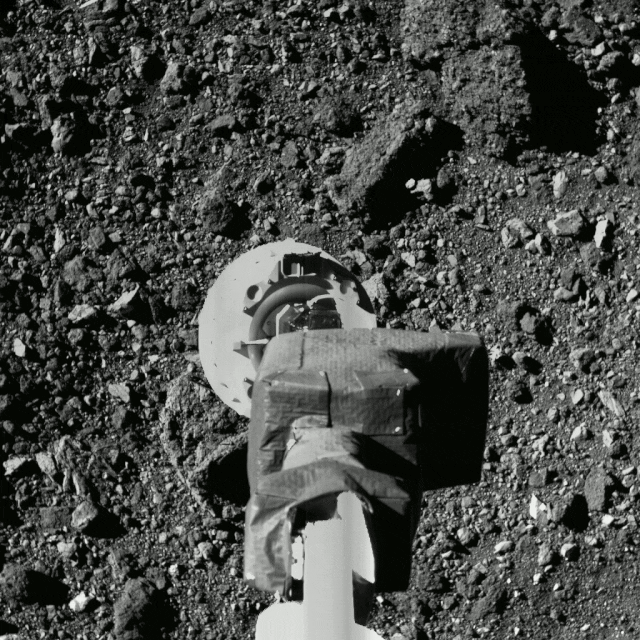
Walsh says that the touchdown shows that Bennu's surface layer must have a much lower density than the rest of the asteroid.
"When we did our calculations, initially we were taking the density of all of Bennu, which is 1.1 grams per cubic centimeter," said Walsh. "But our models show afterwards that to be able to compress the surface so much and drive the tag head so deep into the surface, we must have been driving through material that was like 0.4 grams per cubic centimeter: less than half as dense as the entire body."
Scientists are still looking for an explanation. Walsh thinks the low density might mean that there are empty spaces between rocks in the surface layer. In the past, those voids may have been filled with fine material, but over the billions of years that Bennu has traveled through the solar system, these fine grains may have filtered through the rocks into the asteroid's interior, which would, as a result, be much more dense than the surface.
To know for sure, scientists would have to be able to slice up the asteroid. While that's still an impossibility, they hope instead that they might glean some information about the interior of rubble pile asteroids from the upcoming European Space Agency's HERA mission, which will study the aftermath of the experimental impact of NASA's DART probe into asteroid Dimorphos, which took place in September 2022.
Surprisingly complex
Bierhaus said that the OSIRIS-REx mission showed that asteroids are much more than dead rocks floating in space. They might be only a few hundreds of feet wide, but their geology appears surprisingly complex.
"What we're finding is that the physical processes that create and evolve these bodies are very diverse and very complicated," said Bierhaus. "We think that Bennu is the product of a collision from a larger asteroid. The evolution from that body to where Bennu is still a mystery."
Walsh thinks that the analysis of OSIRIS-REx's sample might shed some light on the asteroid's eventful past. Records of past collisions may be seared into those rock fragments and scientists hope to decode them in their labs.
"We have tools to track collisional histories of different grains and in different meteorites," said Walsh. "So we should be able to apply those to the samples of Bennu."
OSIRIS-REx is not yet done teaching us about asteroids.
Join our Space Forums to keep talking space on the latest missions, night sky and more! And if you have a news tip, correction or comment, let us know at: community@space.com.

Tereza is a London-based science and technology journalist, aspiring fiction writer and amateur gymnast. Originally from Prague, the Czech Republic, she spent the first seven years of her career working as a reporter, script-writer and presenter for various TV programmes of the Czech Public Service Television. She later took a career break to pursue further education and added a Master's in Science from the International Space University, France, to her Bachelor's in Journalism and Master's in Cultural Anthropology from Prague's Charles University. She worked as a reporter at the Engineering and Technology magazine, freelanced for a range of publications including Live Science, Space.com, Professional Engineering, Via Satellite and Space News and served as a maternity cover science editor at the European Space Agency.
